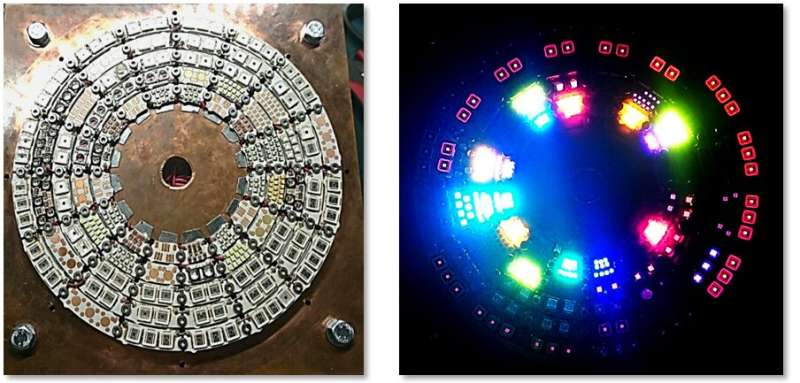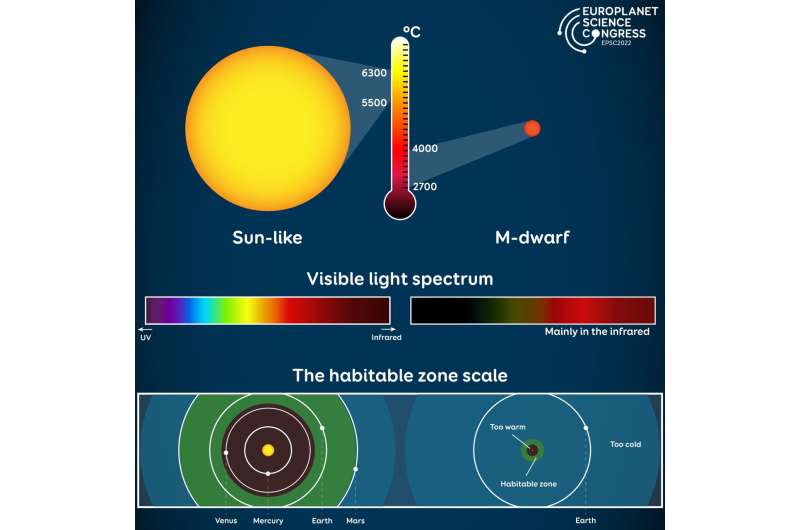Simulator illuminates the search for life around the Milky Way’s most common stars

Italian researchers have demonstrated experimentally for the first time that microorganisms can photosynthesize using the infrared-dominated light emitted by the most common type of star in the Milky Way. The results from the Star Light Simulator, presented at the Europlanet Science Congress (EPSC) 2022, suggest that life could develop around stars different from our Sun and produce oxygen-rich worlds that are habitable by more complex organisms.
Most stars in our Milky Way are the smallest type of hydrogen-burning star, known as red M-dwarfs. They are cooler and less luminous than our Sun and primarily emit light in the infrared and far-infrared, with very low emissions at visible wavelengths. Due to their abundance, many exoplanets have been found around M-dwarfs. However, whether or not these planets could support life has been the subject of much debate in recent years.
The Star Light Simulator, built by a collaboration of teams from the National Institute for Astrophysics (INAF), the Institute of Photonics and Nanotechnology (IFN-CNR) and the Department of Biology in Padua, can generate light intensities and spectra at different ranges to reproduce the light for any star. For this experimental setup, the team recreated the emitted light from an M-dwarf along with an atmospheric simulator chamber that replicated an artificial planetary environment.
“We initially focused on cyanobacteria since they have extraordinary capacities to withstand every environment on the Earth, as well as a known ability to survive in near-infrared light,” said Prof Nicoletta La Rocca of the University of Padua, who led the study. “When these acclimatized to the simulated environment, we extended our tests to mosses and various types of red and green microalgae.”

All the experiments were successful, with all the microorganisms demonstrating that they could grow and photosynthesize under M-dwarf light.
Prof La Rocca commented that “life as we know it depends on liquid water, so that is one of the major criteria for an exoplanet to be considered to be habitable. More complex terrestrial life forms also depend on oxygen. On Earth, photosynthesizing cyanobacteria played a vital role in oxidizing our atmosphere. The new experimental results extend our knowledge of potentially habitable environments and hence, where we might expect to find a planet harboring complex life.”
Super-Earth Ross 508b skims habitable zone of red dwarf
Conference: www.epsc2022.eu/
Provided by
Europlanet
Citation:
Simulator illuminates the search for life around the Milky Way’s most common stars (2022, September 21)
retrieved 21 September 2022
from https://phys.org/news/2022-09-simulator-illuminates-life-milky-common.html
This document is subject to copyright. Apart from any fair dealing for the purpose of private study or research, no
part may be reproduced without the written permission. The content is provided for information purposes only.
For all the latest Science News Click Here
For the latest news and updates, follow us on Google News.

